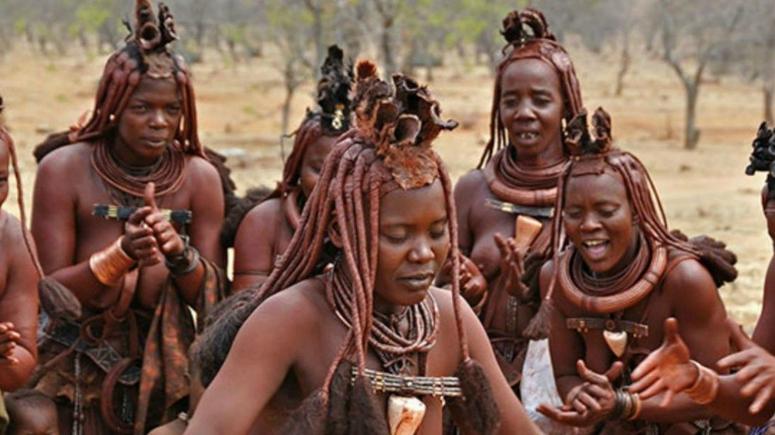They are very friendly to foreigners (tourists), but do not allow them to interfere or influence their culture. Even the government has put strict laws that prevent tourists from influencing their culture.
They have three notable cultural practices;
1) The first is that when someone visits a married Himba man, he has to offer one of his wives to the person to show how happy he is. The act of a man offering his wife to his guest is known as ‘Okujepisa Omukazendu’. The husband will sleep in a different hut and if he does not have another hut, he would sleep outside for the night.
2) Their second most notable cultural practice is that their women cover their hair and skin with a special type of mud paste called ‘otjize’. The females have different hairstyles for children, young girls undergoing puberty, girls who about to get married and married women.
3) Their third most noticeable cultural practice is that they do not have their bath with water, this does not mean they do not clean their body. Due to the scarcity of water, they clean their body with a red ‘otjize’ paste, it is a mixture of butterfat and ochre pigment. They use smoke from a special incense to make themselves sweat and the sweat is used as water to clean their body. The red ‘otjize’ paste is also used to protect their skin from the harsh sun.
4) The tribe worship a god called Mukuru, they believe they can talk to Mukuru by lighting a fire called ‘Okuruwo’.
5) The Himba people stick to porridge. Every morning and evening they heat some water, wait until it boils, and put some flour in it, maybe add some oil and food is served. The flour is mostly from maize, but from time to time you might find some mahangu flour as well. Mahangu is another name for pearl millet; it is a prevalent crop in Namibia since it performs well in soils with low fertility. On rare occasions, such as weddings, the Himba do eat meat, but this is more an exception than a rule.
